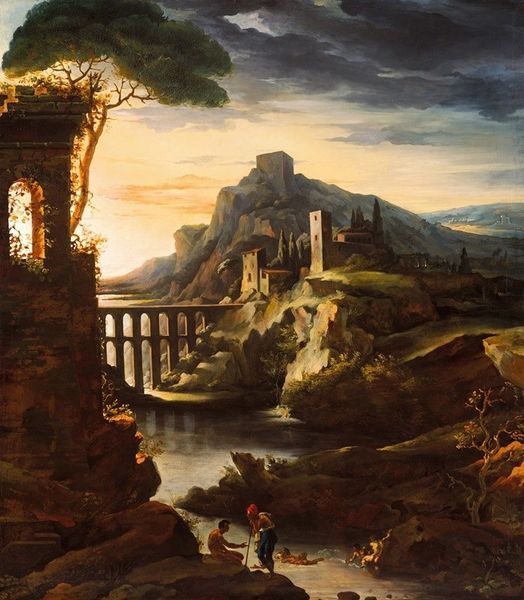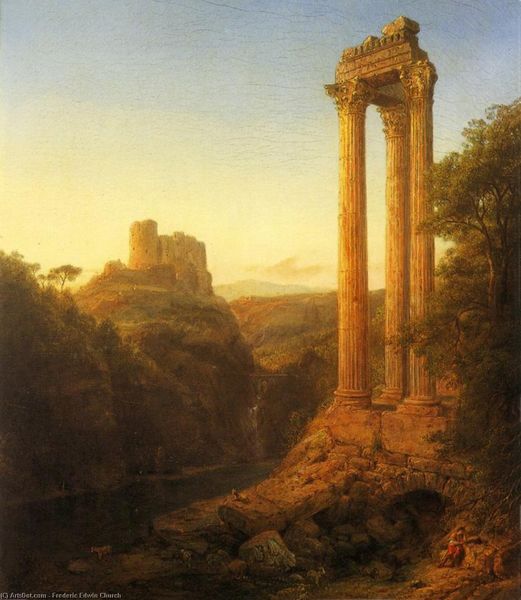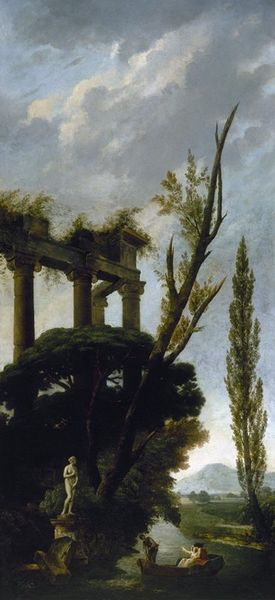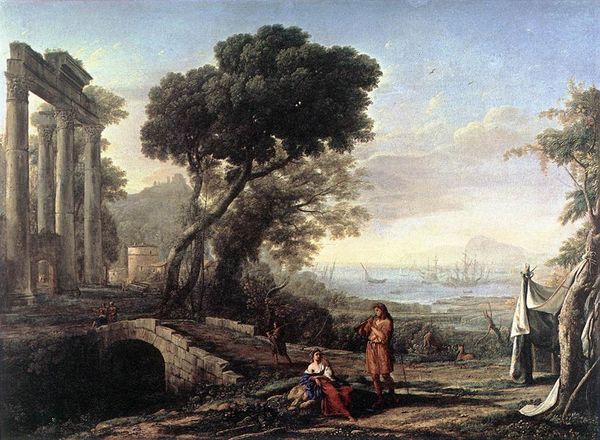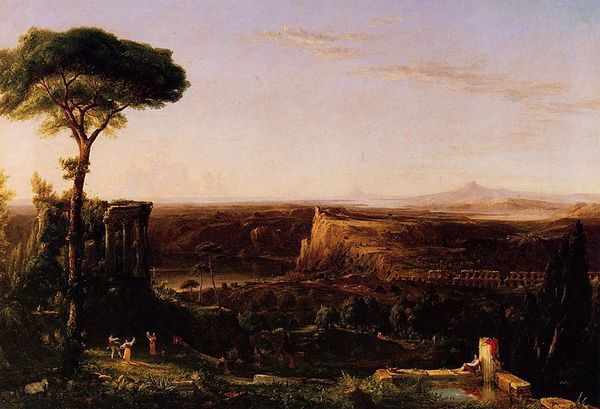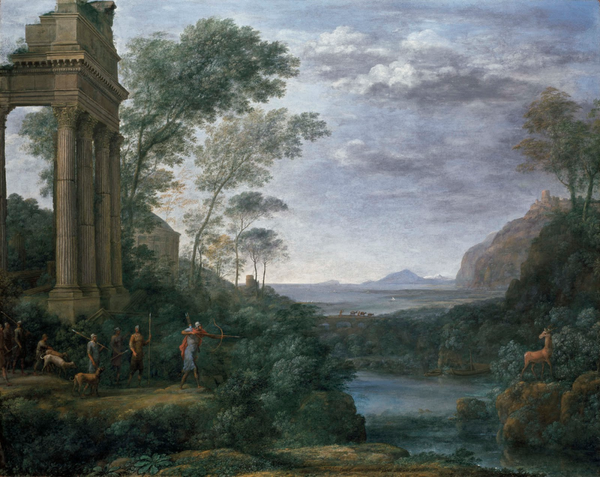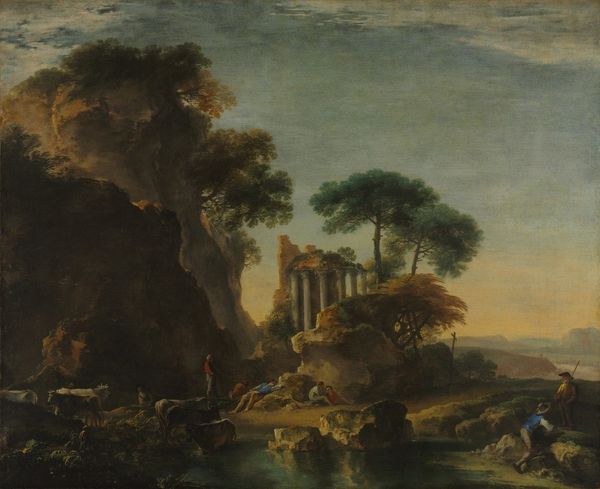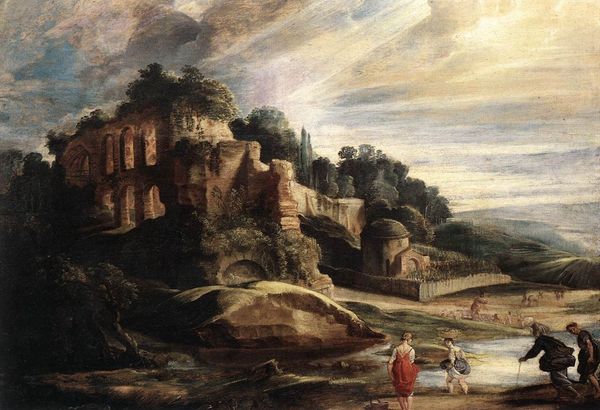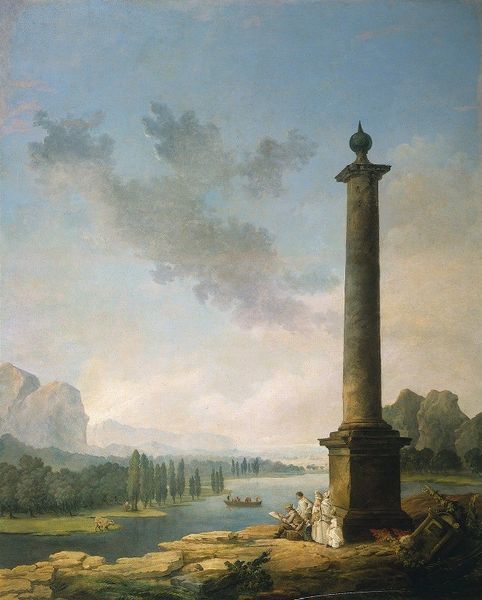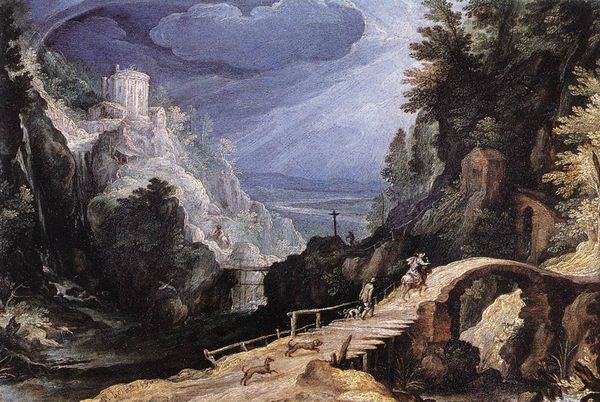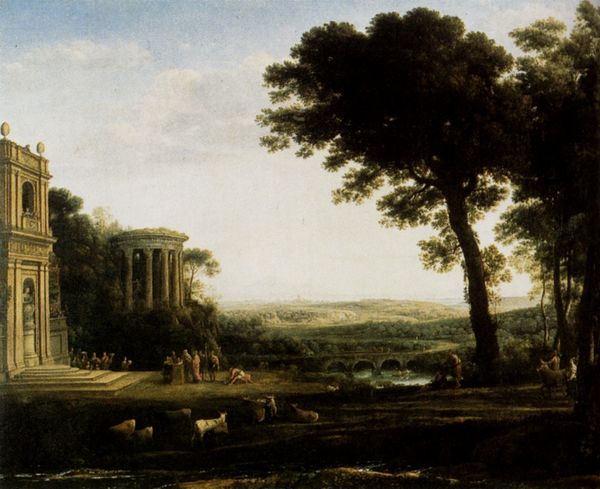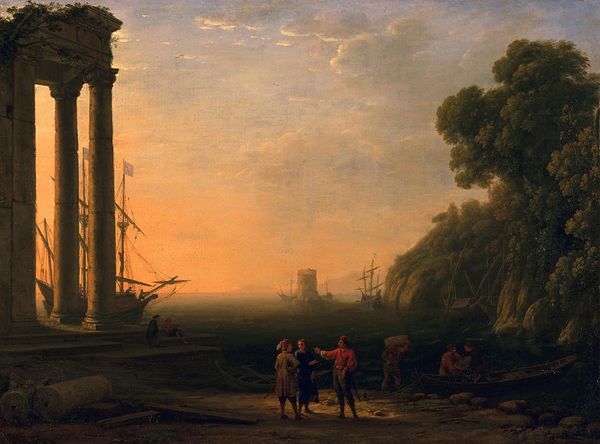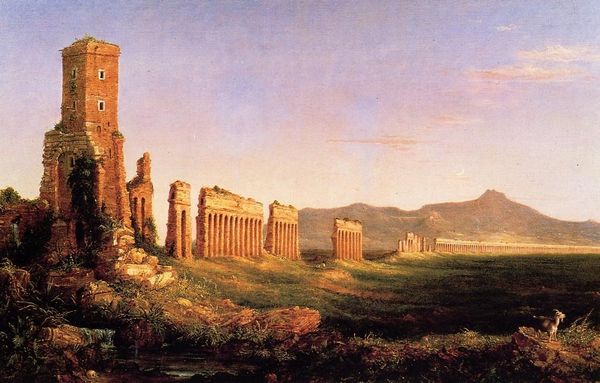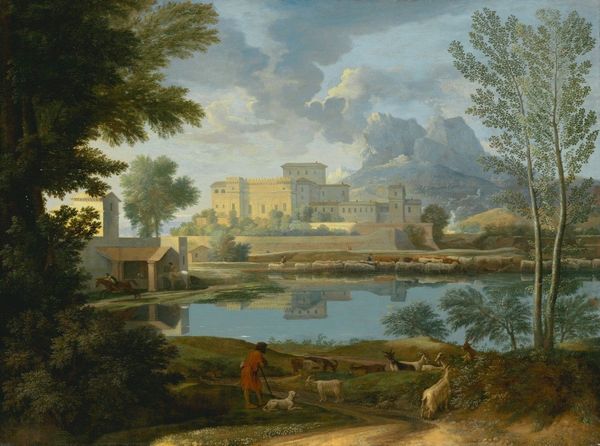
painting, oil-paint
#
painting
#
oil-paint
#
landscape
#
oil painting
#
column
#
romanticism
#
hudson-river-school
#
water
#
cityscape
#
history-painting
Dimensions: 160.7 x 100 cm
Copyright: Public domain
Curator: Thomas Cole's "The Course of Empire: Desolation," painted in 1836, always takes my breath away. It’s one of five paintings forming a series tracing the rise and fall of an imagined ancient civilization. This one resides at the New York Historical Society, and boy, does it linger in the mind. Editor: A desolate reflection indeed! The sheer loneliness of that single, eroded column. It dominates the foreground and hints at vanished grandeur, speaking volumes about time's inevitable, indifferent power to undo human aspirations. Curator: Absolutely. Cole painted this in oil, layering history and emotion. Look how nature reclaims everything – ivy snaking up the column, rubble softening under moss, a sense of drowning ruins. The sublime indifference. What thoughts go through your head about his methods, in context? Editor: Considering Cole’s influences—the burgeoning industrialism reshaping America—this canvas functions as both lament and warning. Oil paint, that durable medium of empire portraiture, employed here to depict decline, really drives home a critical point. His paint is not celebrating power, but showcasing entropy! And look at the bridge half-fallen in the middle ground. Curator: Precisely! The composition creates a feeling of irretrievable loss, though softened somewhat by the pale moonlight washing over the scene, suggesting peace. A poignant farewell after the ravages. Does the human element disappear altogether? I see a few, possibly. Editor: There seem to be people there by the water's edge— are they simply dwarfed by the monumental wreckage, rendered irrelevant? The sheer scale reduces human effort to futility! Oil paints themselves were increasingly mass-produced at this time, cheaper for wider dissemination... Were images of empire’s hubris also becoming commodities in a young republic? Curator: Interesting point! Perhaps that melancholic reflection was indeed increasingly marketable, I should expect Cole must have thought so! So we stand here now, looking at ruin that looks back through centuries, each seeing echoes. Editor: Indeed, a potent reminder. As long as we consider materials, labor and process, this piece urges me to value every constructed thing's intricate making in its moment— because even paint crumbles, in time.
Comments
No comments
Be the first to comment and join the conversation on the ultimate creative platform.
